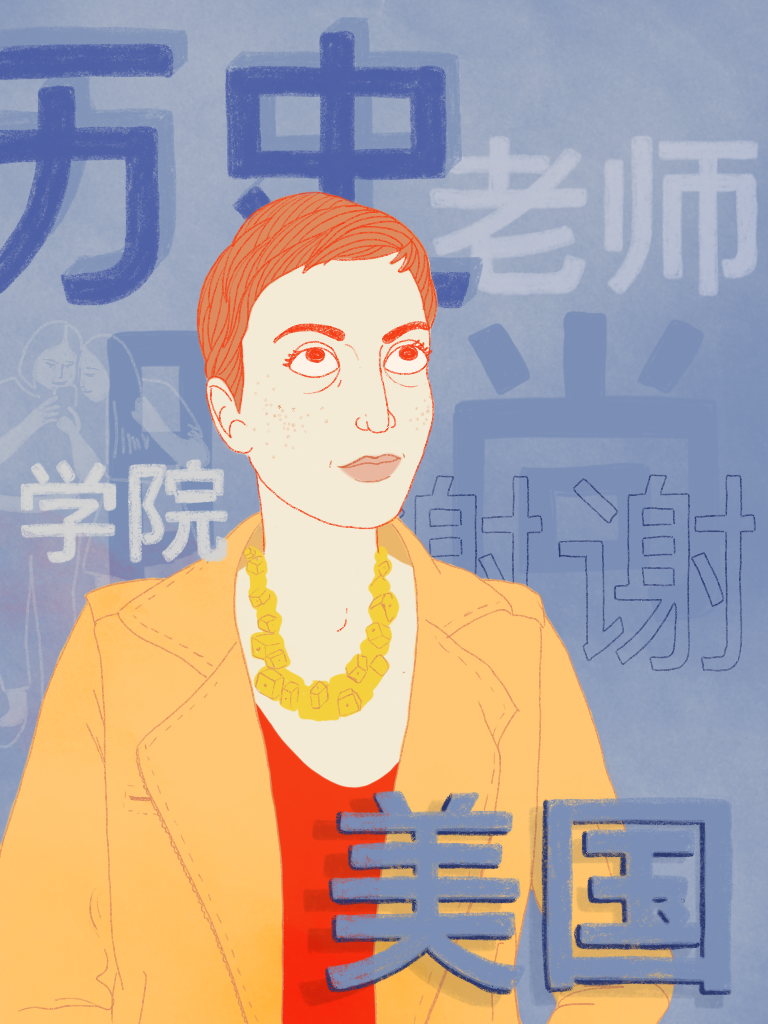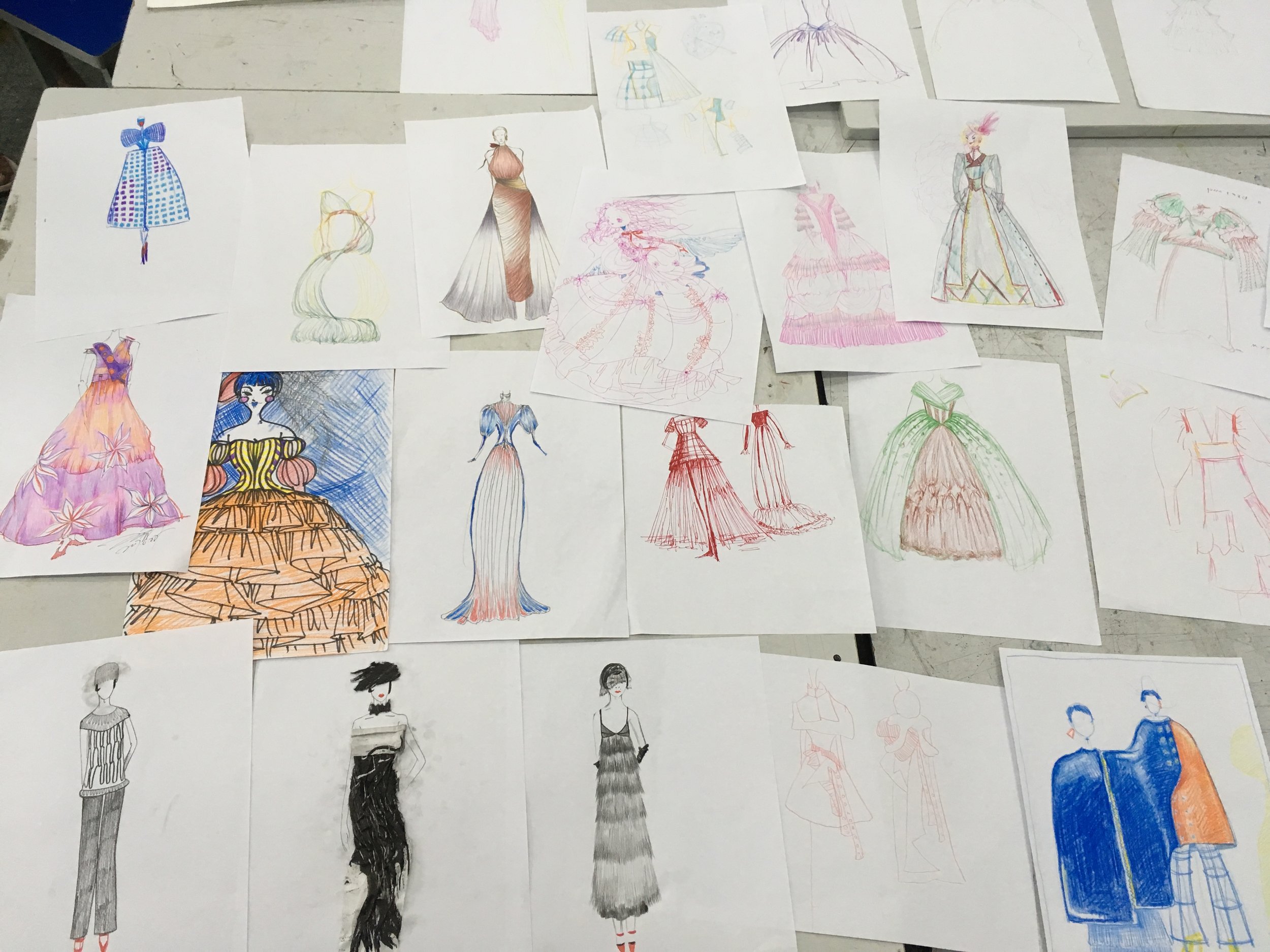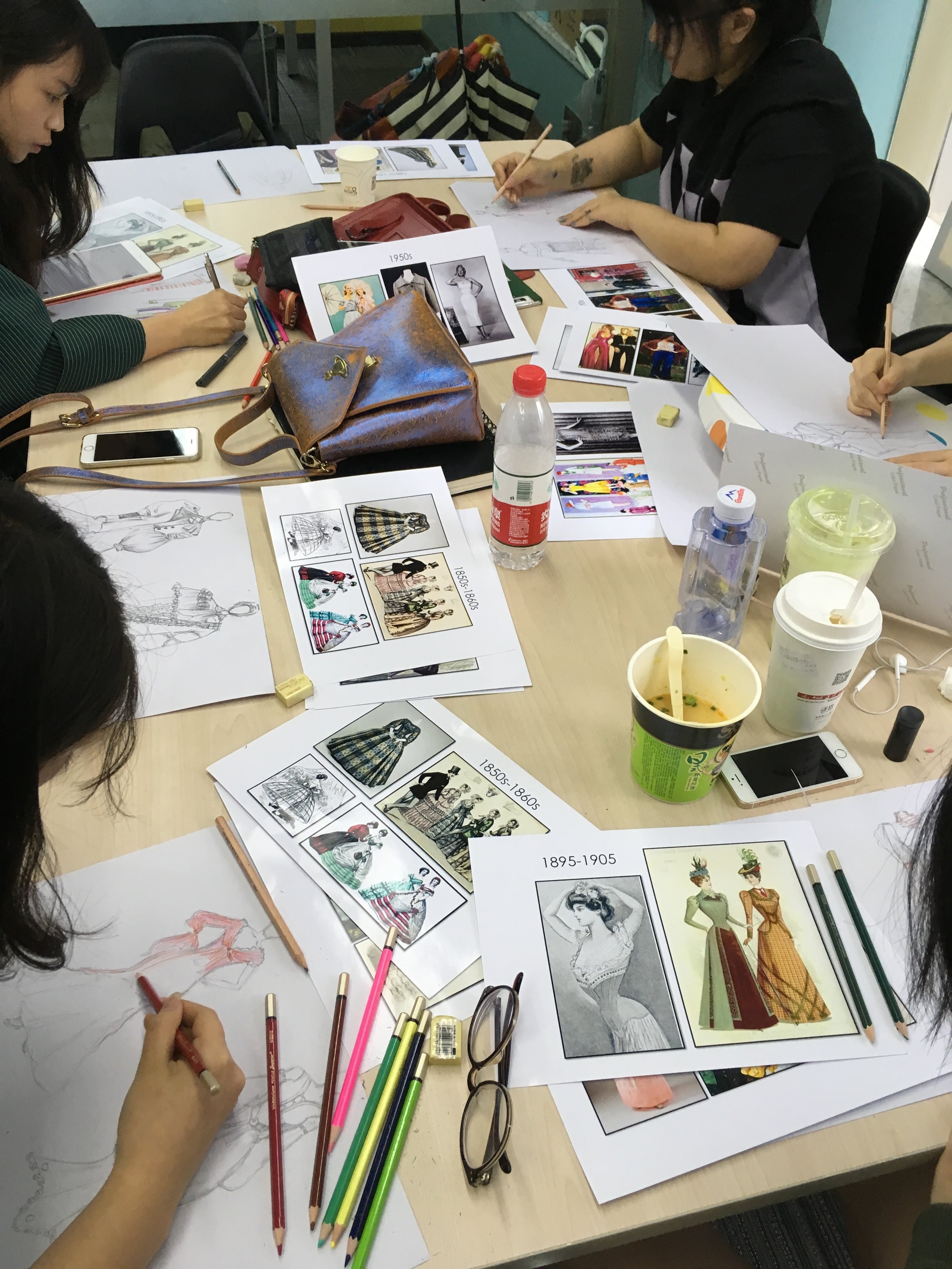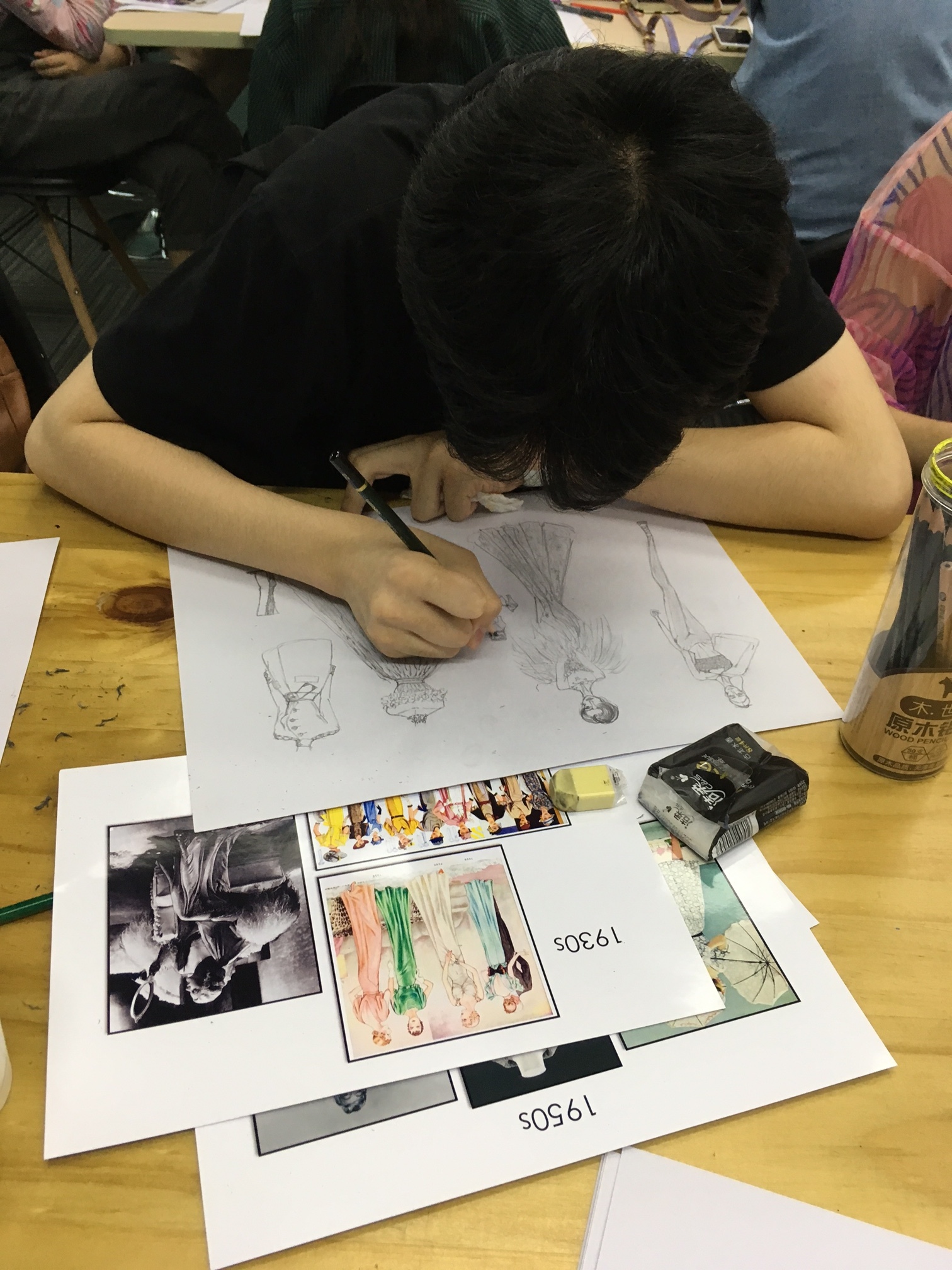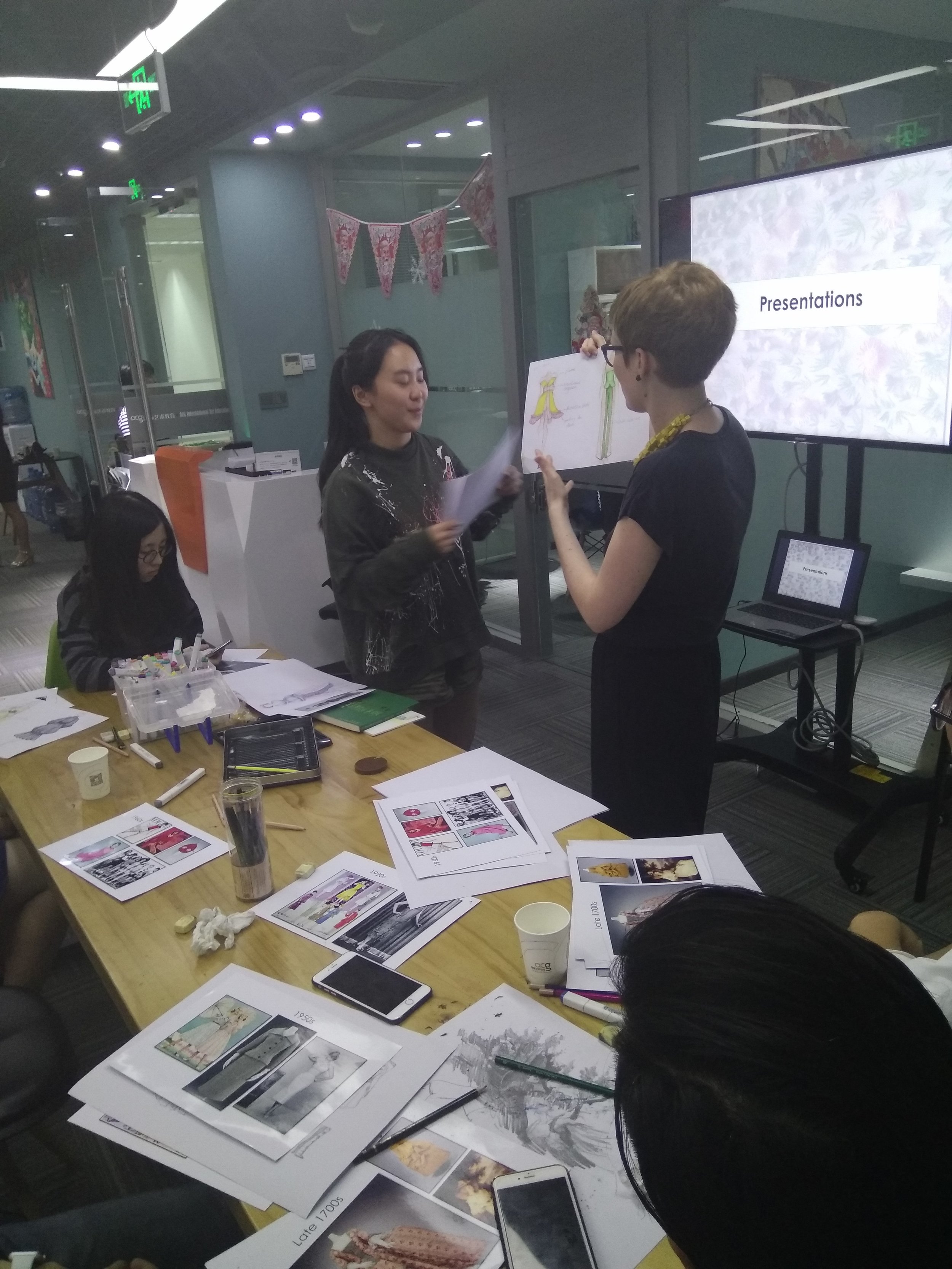What I Taught in China and What China Taught Me
This summer I spent three weeks traveling through southern China on a lecture tour, making stops in Chengdu, Chongqing, Guangzhou, Shenzhen, and Shanghai. Since my return, numerous friends and family members have asked me about my experiences there, but I’m never really sure what to say. I could go on and on about the incredible things that I saw and all of the fantastic food that I ate, but the true impact of my trip goes far beyond the Technicolor temples and delicious dumplings. I went to China for the purpose of teaching, but ended up learning much more in return.
I'm not going to be able to share any groundbreaking pedagogical methodologies in this article. I will, however, give some perspective into what happens when we—speaking on behalf of those who struggle to make an impact in academia—remove ourselves from the politics and stress of our competitive field in order to focus on doing what we love. This article will also discuss the obstacles we face when teaching students overseas, including overcoming language barriers, defeating cultural biases, and appealing to the interests of students with disparate backgrounds. Moreover, in a world where we tend to stay inside the bubble of our own country and culture, I think it’s important for everyone to know a little about what exists in areas outside of our own geographical boundaries, especially when it comes to countries that are often portrayed negatively by the popular media.
The truth is that I had to fly across the globe in order to fully understand what I’m capable of, indulging in myriad new sights, smells, and tastes along the way. By now this is probably starting to sound exactly like a cheesy Eat, Pray, Love kind of story, but I can assure you that it wasn’t all sunshine and rainbows. If, like me, you’re an educator with a desire to discover your value in academia and better understand your students, or just a person who wants to know what it’s like to be thrown so far out of your comfort zone, I hope that this article will offer some new perspectives, but also prove entertaining.
I was invited to visit China by an art education company that offers personalized training for university and high school students in order to enhance their design skills and help build strong portfolios, mostly for the purpose of applying to larger programs. The company has branches in twenty cities across China and partners with a number of Chinese schools for various types of public programing. As part of this public programing, I was asked to share my history knowledge through auditorium-sized lectures at a number of universities, as well as small workshops at the company’s campuses and a few high schools. Outside of teaching, I was told that I would be paired with English-speaking guides who would show me around each of the cities that I would visit.
At first, the exact reasons for being chosen for this amazing opportunity baffled me, but the company’s representative later informed me that they had found me via LinkedIn and were impressed by my personal website. (Perhaps shameless self-promotion really is the key to a successful career…) While the offer certainly sounded exciting, the reality of the situation was that I was about to travel across the globe to spend three weeks with a group of complete strangers, unsure of what I would actually be seeing, eating, or doing outside of teaching. While I have always been inclined to taking risks and accepting unusual offers, having so little knowledge or control over what I would be experiencing felt unusually bold—or maybe just plain stupid.
Boarding the plane at JFK, the reality of the situation struck me, and a sense of anxiety began to creep in faster than my pre-flight wine could counterbalance. Was I really getting onboard a fourteen-hour flight to be thousands of miles away from my family and friends for three weeks? Was I really putting all of my safety and needs in the hands of people I’d never met? Perhaps I really was crazy. Yet, despite these feelings of trepidation, I also felt strangely serene, proud of the fact that I had already made it this far and that I was about to begin the kind of journey that very few people get to experience.
“The truth is that I had to fly across the globe in order to fully understand what I’m capable of, indulging in myriad new sights, smells, and tastes along the way. ”
It’s hard to remember exactly what I felt when I finally arrived in Chengdu, but I know that it all seemed quite overwhelming. It was also the first time that I had ever felt what it is like to be a minority—my red hair, wide eyes, and freckled complexion suddenly looking remarkably distinct and peculiar amongst a sea of dark hair and Chinese facial features. Luckily there were two wonderful young ladies from the company who were there to pick me up and take care of me for the entirety of my stay in Chengdu, and I’m forever grateful for the help of these guides while I adjusted to culture shock and sensory overload.
By the time we finished dinner that first night, I didn't just like China—I was smitten. The colors, the flavors, the history, the vitality of it all... it was like nothing that I had ever experienced before in all of my years of traveling, and it didn’t take long until I had fallen head-over-heels in love with the country and its culture. Like most relationships, we had our ups and downs, but the majority of the time that I was there I was just happy to soak in as much as I could.
Of course, I wouldn’t have been able to survive there without the friendship and hospitality of the guides that I had in each city, as well as the friends and family that they introduced me to. I’m typically skeptical of initiating friendships with people who have been paid to take care of me, but by the second time I had a tear-filled goodbye with one of my guides at an airport, I realized that these friendships were real. In fact, after spending days together from morning to night, it was difficult for me to leave these new friends and board a plane or train to my next city, although there was always another caring guide and soon-to-be-friend awaiting my arrival.
In a sense I had to be treated like an infant since I couldn’t talk to people, get myself around, or even cross the street without the help of my guides and friends. This was primarily due to the language barrier, as the vast majority of people in most of the cities that I visited could not speak any English. However, after spending a few days being completely unable to decipher any lettering that I saw, I became strangely comfortable in my new state of circumstantial illiteracy, and was happy to eat any food that was presented to me in blissful ignorance. While it was nice to get the V.I.P. treatment and have all of my needs met by guides and translators, I did miss the autonomy that I have in the States, and being able to solve problems and take care of myself without feeling hopelessly lost in translation. On a personal level, I’ve learned this from my experience: you don’t really know another country’s culture until you’ve been there; beauty ideals are completely relative; and Americans worry way too much about what we eat.
While my leisure time was spent watching pandas and scorching my stomach with hot pot, the educational portion of my trip did not have such a sensational start. I had been worried from the beginning since I wasn’t entirely sure who I would be teaching and what they wanted to learn. The coordinator of my trip informed me that the students would be a mix of university students, high school students, and professional attendees who would be interested in learning about anything related to fashion history. While it’s nice to have flexibility in teaching, the lack of constraints made choosing a direction for my lectures and workshops exceedingly difficult. Fashion can be related to any part of human history and can be used to connect to any topic, whether it be anthropology, design theory, or economics—how could I possibly choose a way to teach fashion history to such a diverse audience, and what did I want them to learn in just a few short hours?
Above all, I worried about what would happen if I only spoke about Western fashion history, which is essentially all that I have taught before. In fact, the issue of looking at fashion history as a Eurocentric discipline is one of the greatest concerns that I have when teaching in my daily life at Parsons. Of course, it would be impossible for me to teach the history of world fashion in just one short semester. I do my best to remind my students that I will be providing them with one singular narrative of fashion history, while there are hundreds of other cultural narratives that can be studied. So, the question came down to this: How do I make up for Western cultural biases when teaching in China? Additionally, because I would need to make references to people, places, and events, how much did they already know about Western history in general?
Since I would be repeating the same lecture and workshop multiple times in each city, I made a list of five possible lecture and workshop topics for my trip coordinator to choose from. The topic that my coordinator liked best for the one-and-a-half-hour lecture was “The Transition from Couture to Ready-to-Wear,” based on a course that I taught at Parsons in Fall 2016. My intention was to provide lecture attendees with a look at what “couture” really means and the history behind the traditions and techniques, starting with how the French government put an emphasis on its fashion industry in the 1600s. From there, the lecture was intended to explore the numerous changes in technology that have allowed high-fashion clothing to be made in mass production, and how ready-to-wear clothing was an integral part of revolutionizing fashion and society during the mid-20th century. Finally, the lecture would take a look at fast fashion and question the relevance of the couture industry today through different viewpoints. I had hoped that this topic would be a good way to teach Chinese students about how fashion connects to technology, social status, and other related topics. Ideally, this would also make them think a bit more about how they consume fashion on a personal level and even how the concept of “fashion” has evolved. (Spoiler alert: it didn’t always go so well.)
“I hoped to teach the students in China that fashion was really one of the only things that connects people across the world and across history.”
For the three-hour workshop, my coordinator preferred a pitch that I called “Using History as Modern Design Inspiration.” The workshop would begin with a quick crash-course through fashion history, outlining the most significant eras and style movements in Western fashion between the 1700s and 1900s. After that, I would show students numerous examples of how famous fashion designers have directly referenced looks from fashion history, asking them to examine the different ways that history is used, what effects can be achieved through this, and what happens when you change the original intention or meaning of a design. From there, students would create rough sketches for garments that are inspired by a particular era using images of historical styles and designs as inspiration, which I had printed on sheets that they could choose from. The intention of this workshop was to make the attendees more aware of the ways that they could utilize fashion history in their work while encouraging them to develop their ability to discuss ideas, inspiration, and design processes.
For both the lecture and workshop, my principal motivation was to provide students with a very broad overview since I knew that there was a possibility that this would be the only time that these students would ever be taught fashion history, especially if they didn’t end up attending a large university. At the very least, I wanted them to notice that fashion trends are cyclical and that history always connects to who we are today, no matter how absurd the trends of the past may seem. Moreover, I hoped to teach the students in China that fashion was really one of the only things that connects people across the world and across history. Therefore, I decided to focus on how humans physically connect to clothing as it’s something that every person can identify with. I told the students that I wanted them to learn how to time travel, and the best way to do that was to know how it would feel to live in clothing from these previous eras. After all, a corset or wide crinoline skirt may seem ridiculous to the modern eye, but once you start to learn how it would feel to walk, breathe, and eat in such garments, it’s easier to understand what life was like for people in the past.
Despite my best efforts, the lectures didn’t always go as well as I had hoped. In fact, some of them felt borderline disastrous due to myriad factors that I have since learned from. The biggest issue was realizing that the topic was inappropriate for certain settings. While “The Transition Between Couture and Ready-to-Wear” was an appropriate lecture when I spoke at large universities to fashion design and marketing students, it certainly wasn’t a very fun topic to teach when I was giving lectures in coffee shops and other small venues. Unfortunately, I didn’t know that the types of venues would be so different, and often didn’t know where I was going until I was on my way there. In hindsight, I would have prepared a few different lectures that could be adjusted to fit different types of venues and audiences, such as one traditional academic lecture and a few less formal ones that are more broad and easier to understand.
Another issue was that I found out that many students showed up to the lectures having no idea what I would be talking about. They were excited to come see someone from New York speak about the fashion industry, but after sitting through a few minutes of me discussing the contributions of Charles Frederick Worth or the effects of the Industrial Revolution, I could see that they wished they had stayed in bed. I made edits to my presentation after each lecture in a continual effort to make it more interesting and digestible, but it wasn’t until my fifth lecture that I actually redid the entire thing and focused more on my own experience in the fashion industry, while also introducing them to some important concepts related to fashion studies.
Perhaps it’s no surprise that the biggest issue that I encountered in my teaching was the language barrier. I had never worked with a translator before, and had not predicted just how difficult it would be for me. Teaching history is essentially like story telling, and having to stop every time you say a few sentences so that someone else can repeat it in another language can make it terribly difficult to maintain momentum. Of course, this is not the fault of me or the translators, as language barriers are inherently difficult to work around. Needless to say, the combination of the (relatively serious) topic and the constant starting-and-stopping of my speech probably made that one hour and a half feel very long to some students.
“While I still have things to learn and room to grow, teaching in China made me realize that I have already accomplished a great deal, and that I do have something to contribute to the field of fashion education. ”
Fortunately, every one of my workshops went extremely well in comparison to the lectures thanks in part to having smaller groups and more intimate settings, which allowed for interaction between me and the students. The greater success can also be attributed to the fact that most of the students who were attending the workshops were preparing to apply or begin studying at international schools. Because of that, I only had to use a translator for one of my workshops, although one was present at all of them in order to help clarify statements and answer questions for students who weren’t completely comfortable with speaking in English.
As a way to reduce some of the confusion that these students would potentially experience, I began to use a lot of hand gestures to help describe all of the styles and garments that I was discussing. I have always been inclined to use a lot of dramatic hand gestures when teaching in order to keep my students’ attention, but by the end of my time teaching in China, I was doing full-on exercise routines using my entire body as a supplement to verbal language, literally acting out what it would be like to sit and walk in certain types of clothing. While I probably looked completely insane jumping around the room, I did notice that students seemed to respond well to this, and hopefully it helped to further their understanding of how the bizarre garments in the old photographs and fashion plates that I showed them were actually part of everyday life for people at one point in time.
The strange thing is that no matter how well my lectures went, I was always met with the highest levels of respect and appreciation. Each time I finished a lecture, there was applause and expressions of gratitude, sometimes paired with gifts and bouquets of flowers. The first time that happened, I was stunned. Did they really like my teaching that much? Was I really worthy of so much fanfare? Regardless, there was always a line of students requesting selfies and autographs at the end of my lectures and workshops. In fact, some students even brought their parents to take pictures with me! While I have plenty of students at Parsons who make me feel loved and appreciated, this level of affection and admiration made me feel like a movie star.
Actually, being treated like a movie star was practically the norm whenever I was teaching in China. My gracious guides would always meet me at my hotel before a lecture or workshop and treat me to a delicious, relaxing meal, which was far different from my normal pre-teaching routine (a.k.a. stuffing a salad in my face while running down the street). We always took cars everywhere, so I never had to be crammed into a steamy, cramped subway (another thing that’s usual for my life in New York). To make things even better, they always made sure that I had a coffee or bubble tea in hand before teaching, which was every bit as delightful as it sounds.
Although the bubble teas were certainly a bonus, my favorite part of teaching in China was being able to interact with the students and to see them think about new ways to approach their design work. I can honestly say that I was blown away by some of the talent that I witnessed in these schools, sometimes emanating from young high school students that have never taken a single fashion design course in their entire lives. I was also astounded by how so many of them were able to take elements of historical clothing and incorporate them into their designs in ways that I had never seen before, especially in such a short amount of time.
No matter how many times I experienced the thrill of teaching in these amazing (yet surreal) situations, it was extremely hard for me to believe that I was worthy of such praise. Did they know that I was just one of many fashion history teachers in America? Did they know that I was just a goofy history nerd and not a glamorous celebrity? Sure, I have a master’s degree, numerous publishing credits, ten years of fashion industry experience, and a position teaching at America’s top design school, but still! Was I really important enough to warrant the respect of people who live across the world? It sure didn’t feel like it.
As many of my colleagues can attest, the so-called “Imposter syndrome,” or a persistent fear of being exposed as a "fraud," is all-too-common for academics. In China, the condition was taken to an entirely new level for me, as I struggled to come to terms with the inconceivably high levels of respect and admiration that I was receiving. Like most of my friends who are still in the early stages of their careers, I’m constantly fighting to prove my worth in academia. While I still have things to learn and room to grow, teaching in China made me realize that I have already accomplished a great deal, and that I do have something to contribute to the field of fashion education. I like to have fun with my students, I like to be open minded, and I like to teach history in new ways… perhaps I was worthy of the attention that I was getting. I have spent so much time working to achieve more and more things in my career that I’ve almost forgotten to stop to appreciate what I can do and what I’ve already accomplished.
The basic fact was that I was doing what I love and everything that I’ve done leading up to this point had provided me with the opportunity to visit China, a country that I had never imagined getting a chance to visit. Perhaps all of the years of expensive education and unpaid internships had finally paid off! After all, I was living the dream and not having to be distracted by the constant need for validation from students and peers. For the first time (maybe ever?), I felt like I had something really special to offer, and I was able to enjoy my work instead of worrying about what I could do to be better. While it may have given me an inflated sense of self importance and vanity, being praised and appreciated by my students and colleagues in China was extremely helpful for my self confidence, and I’ve never felt more capable than I do right now.
I also believe that the trip had a tremendously positive effect on my teaching skills in general. Having to talk to so many different types of people in such diverse settings has made me feel more at ease teaching in any type of situation. Additionally, speaking to large groups of non-native English speakers helped me learn how to slow down my speech and describe abstract concepts in clearer ways. Prior to my trip, I was unaware of just how many idioms and words I use that are not part of the English taught in Chinese schools, and so I had to adjust my vocabulary accordingly. The heightened awareness of how I use language certainly gave me a greater understanding of how best to communicate with some of my non-native English speaking students at Parsons and Pratt.
“So, did I get stressed at times? Yes. Did I come back with a stomach illness that still makes me nauseous every day? Also yes. But do I regret the decision to go? Absolutely not! ”
That being said, I would be remiss if I didn’t mention at least a few of the less enviable parts of my trip. For one thing, the twelve-hour time difference certainly isn’t an easy thing for a body to overcome. I ended up chugging Red Bull like a middle-school-aged boy throughout the entirety of my trip. Fortunately, I was mostly lucky in terms of avoiding sickness while I was there, but there was the exception of one episode of mild food poisoning on an airplane flight between Chongqing and Guangzhou. (This was only made worse by the fact that the plane was forced to sit on the tarmac for three hours, and none of the flight attendants or passengers could figure out what the hell was wrong with me when I refused to leave the toilet since none of them spoke any English.)
Many of the inconveniences that I experienced in China also helped me to better appreciate what we have in America, including the ability to access Google, many types of social media, and other forms of free speech without the use of a VPN. More importantly, since you can’t drink tap water throughout most of China, it’s necessary to fully boil it or stick to bottled water. After weeks of trying to keep my mouth closed in the shower, I was extremely relieved to come back home to drink from the faucet and enjoy New York’s delicious (and drinkable) tap water. Additionally, while it seems silly to mention, I must admit that China’s infamous “squatty potties” (or toilets that are essentially holes in the ground) were extremely difficult to use once your body has become accustomed to sitting on “Western toilets” for about thirty years. Of course, I do have hundreds of better reasons to be thankful for being back home in New York (loving husband, beautiful home, yadda yadda yadda), but sitting toilets and drinkable tap water are surprisingly high up on there on the list.
So, did I get stressed at times? Yes. Did I come back with a stomach illness that still makes me nauseous every day? Also yes. But do I regret the decision to go? Absolutely not! Throughout this incredible trip, I challenged myself, learned new things, had a wonderful time, and managed to feel better about myself in the process. In fact, I’m already counting down the days until my next trip so that I can do it all again.

